
Firstbeat Sports’ Training Effect feature measures the aerobic and anaerobic load placed on an individual player and shows the distribution between the two systems.
This provides coaches with instant real-time feedback throughout the session showing which system is being maintained, or improved. It is a valuable tool at your disposal when ensuring sessions are achieving the desired outcome and aiding player development and game preparation.
In this article, we look at how Training Effect is calculated, the Training Effect scale, and how it is visualized in Firstbeat Sports.
What is Training Effect?
The Training Effect (TE) metric available to Firstbeat Sports users instantly measures the impact of training on aerobic and anaerobic fitness – automatically showing how hard players have been worked on an individual level.
TE can be determined at any given moment during exercise. This makes it possible to modify the exercise while it is still in progress.
For instance, Training Effect data will show whether an endurance session intended to develop aerobic fitness is doing so, or if it is working the anaerobic system more than intended. Coaches can then adapt the session.
Training Effect data is visible in real-time via the gauge on the athlete tile, and in individual player reports to use as part of the post-analysis process.
How is it Calculated?
Aerobic Training Effect is calculated based on a heart rate-based model to estimate EPOC (Excess Post-Exercise Oxygen Consumption). EPOC reflects the disturbance of the body’s homeostasis related to exercise and shows the impact on cardiorespiratory fitness. Peak EPOC determines the overall benefit gained.
View our white paper for more details.
Anaerobic Training Effect is calculated by Firstbeat algorithms automatically identifying high-intensity activity (e.g. sprints) and interpreting this information relative to the impact they will have on future anaerobic performance capacity.
Training Effect Scale
The Training Effect scale shows the impact of a session on an athlete:
0.0 – 0.9 – No Effect
1.0 – 1.9 – Minor Effect
2.0 – 2.9 – Maintaining
3.0 – 3.9 – Improving
4.0 – 4.9 – Highly Improving
5.0 – Overloading
Aerobic and anaerobic training impacts the body in numerous ways:
Effects on Aerobic Training:
- Improved endurance and fatigue resistance abilities (+VO2max)
- Improved aerobic metabolism due to higher capillary density and aerobic enzyme activity
- Improved central and peripheral blood flow
- Enhanced ventilation/pulmonary fitness
- Improved fat metabolism and utilization
Effects on Anaerobic Training:
- Improved ability to produce high-levels of energy anaerobically and turn into sprinting performance
- Improved anaerobic metabolism and enzyme activity
- Elevated CP and ATP stores in the muscles
- Enhanced glucose and glycogen metabolism
- Biomechanical and neuromuscular adaption
Different Anaerobic Training Effects and Their Interpretation.

Different Aerobic Training Effects and Their Interpretation.

How can I view Training Effect in the Firstbeat Sports Platform?
The Training Effect gauge shows the distribution of aerobic and anaerobic load within a session side-by-side for easy comparison.
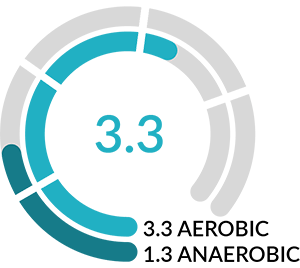
The Training Effect gauge shows the accumulated aerobic and anaerobic Training Effect. The number expressed in the middle of the gauge is the dominant result.
The Training Effect gauge appears in athlete live tiles, the dashboard summary view and in feedback reports. Coaches can use this data to see how aerobic and anaerobic load develops throughout a session and adapt training in real time to produce the desired impact on their players.
Aerobic and anaerobic Training Effect are also visible in chart format via the dashboard. This data is valuable during post-analysis and helps plan future sessions and game weeks.
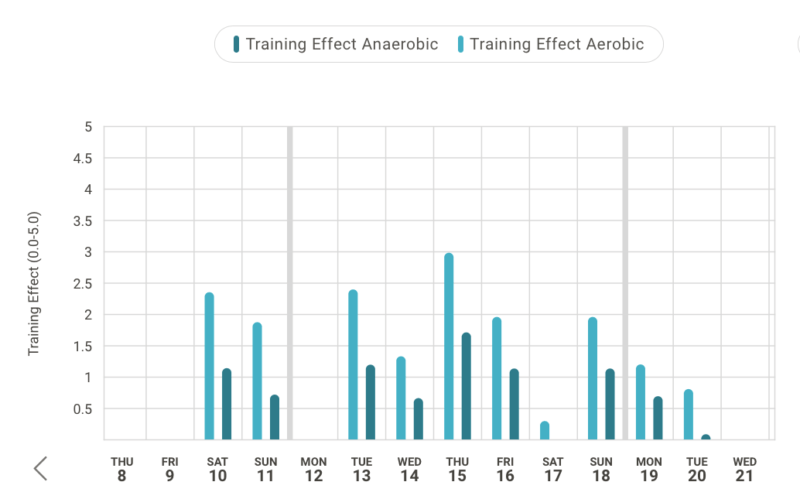
An individual athlete’s aerobic (light blue) and anaerobic (dark blue) Training Effect scores over a two-week period.
You can also see aerobic and anaerobic Training Effect data alongside other variables like acute and chronic training load. Making all this information visible in one place helps identify when recovery days should be incorporated into the training program, or when players can be pushed harder.
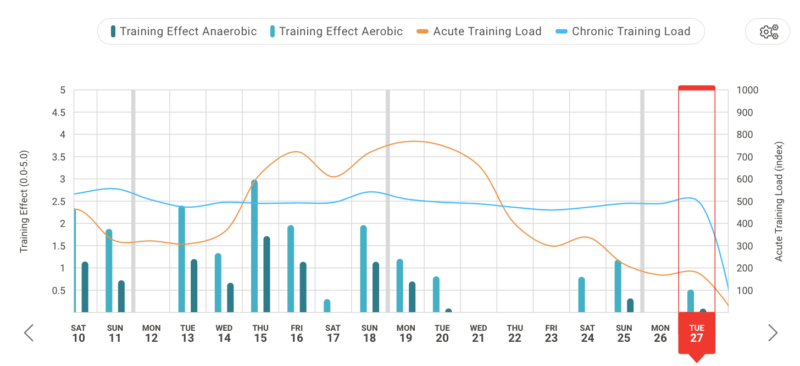
A chart showing anaerobic and aerobic Training Effect alongside acute and chronic Training Load over a 17-day period. This provides an overview for the coach which helps inform future training decision.
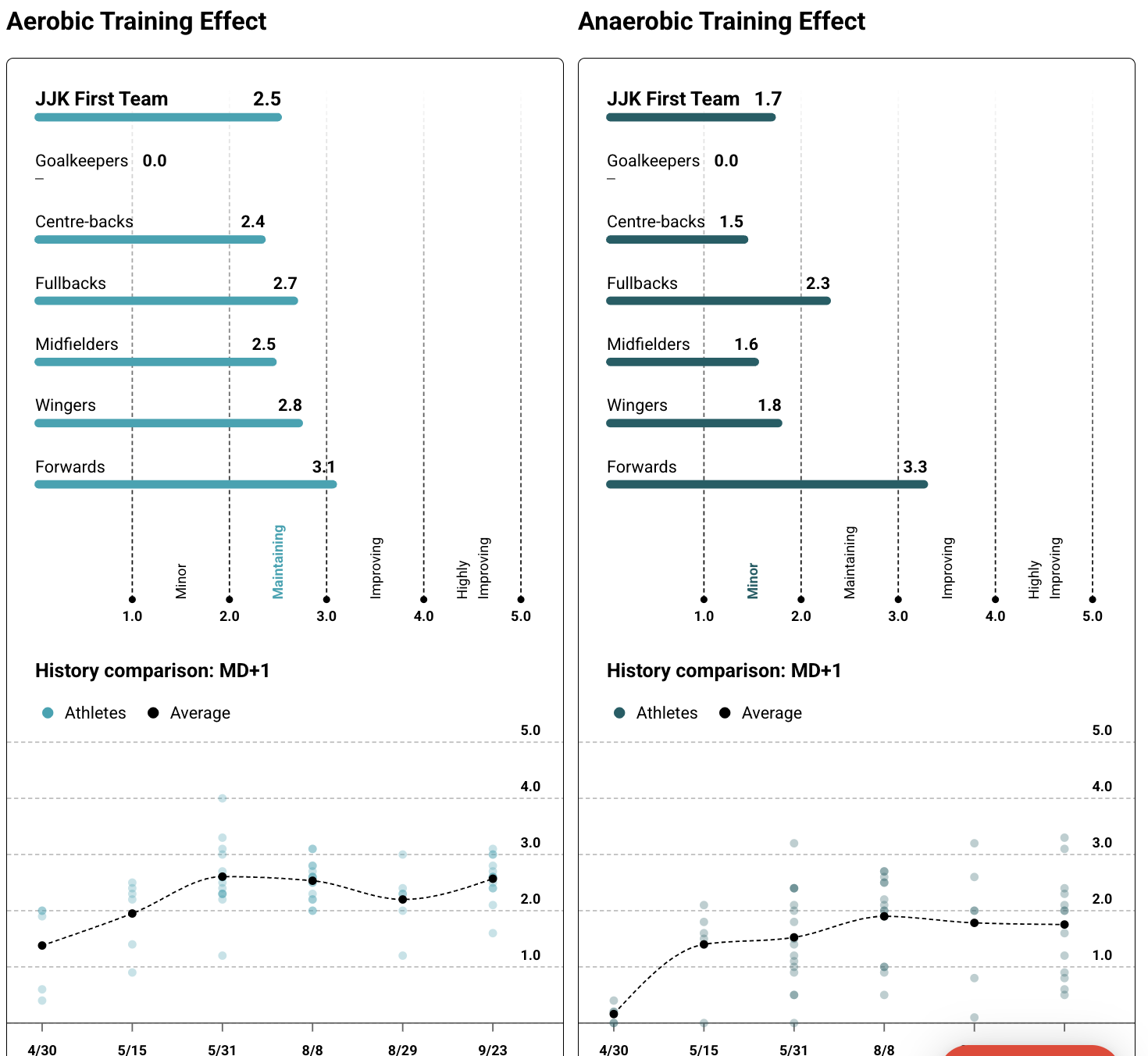
Training Session Report shows the session values on team, position and individual level. You can see the historical comparison for similar sessions in the past.
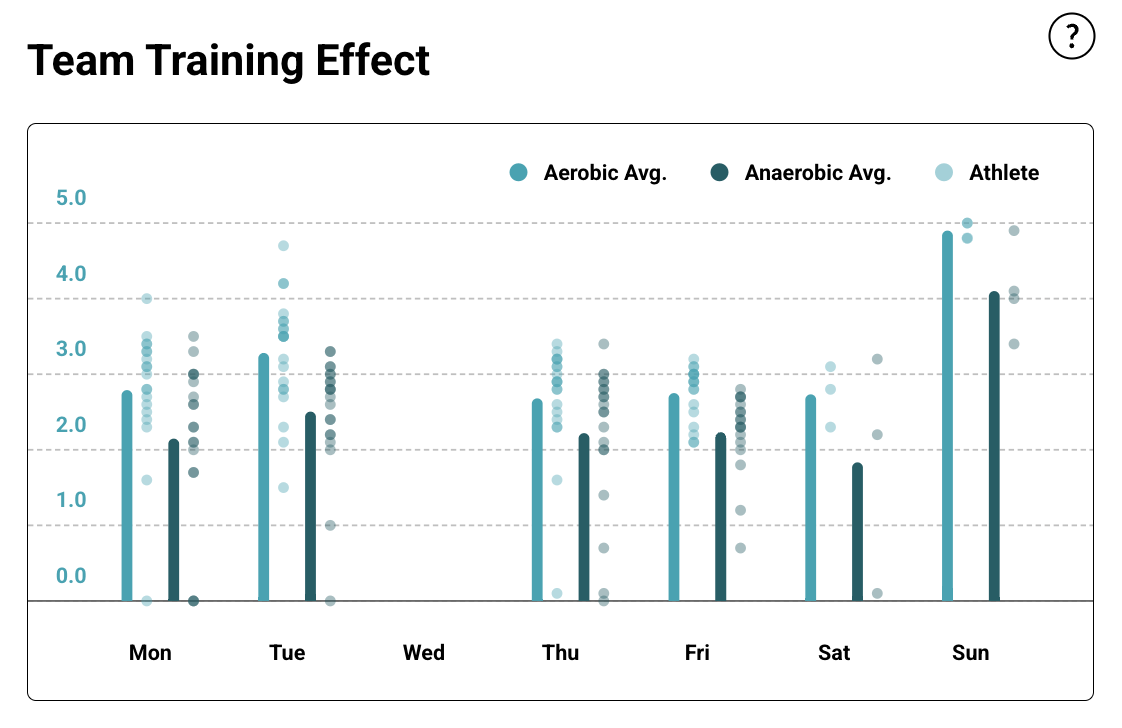
On Weekly Report you can see the Training Effect on team level the last 7 days. This information is available on individual level also.
Using objective Training Effect data as part of this decision-making process gives players the best chance to improve their fitness, whilst also helping to decrease injury risk.
Want to learn more about Firstbeat Sports metrics and how they can help support your coaching work? Download our free athlete training load guide here.
You might also be interested in

Real-time TRIMP/min: How to Use the Firstbeat Sports App Feature in Training
From replicating game intensity to aiding player rehab, monitoring TRIMP/min has wide-ranging benefits.
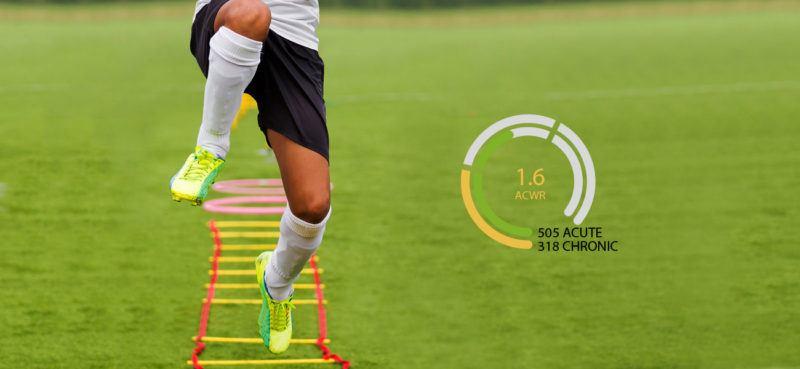
Interpreting Acute vs Chronic Training Load – A Firstbeat Sports Feature
A comprehensive breakdown of the Acute vs Chronic Training Load feature in Firstbeat Sports.

Training Status: the Balance of Training for an Individual Athlete
A comprehensive breakdown of the Training Status feature in Firstbeat Sports.
